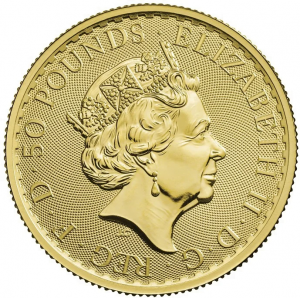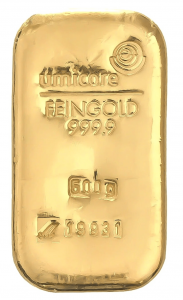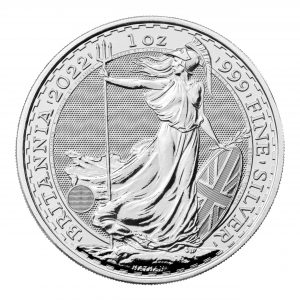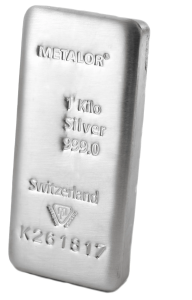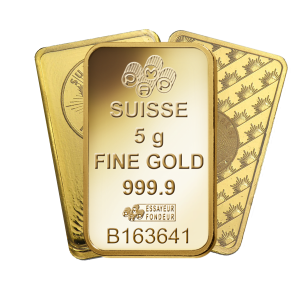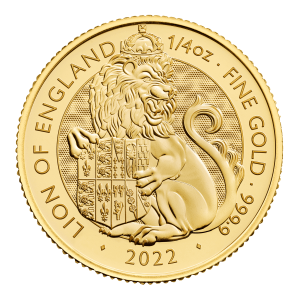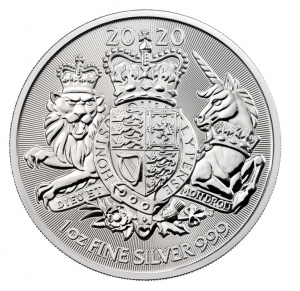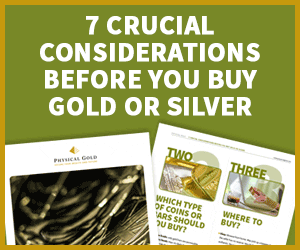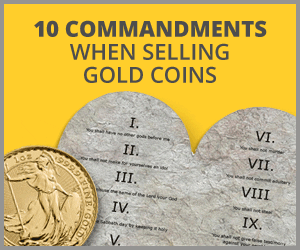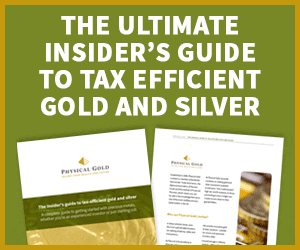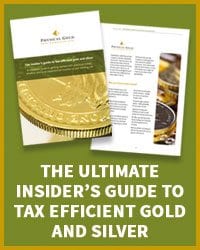Gold coins have been a source of great attraction for many individuals over the centuries. Numismatists who collect gold coins are thrilled with the idea of acquiring a precious and rare gold coin. Investors choose to buy gold bullion coins due to the returns they can make on their investments. Of course, there are certain compelling advantages to buying gold coins.
They are easy to store and often come packaged in monster boxes. They provide divisibility to an investor’s gold portfolio. Also, they have a certain aesthetic value, which many investors prefer over gold bars. However, if you’re thinking of investing in gold coins, there are certain parameters to be aware of.
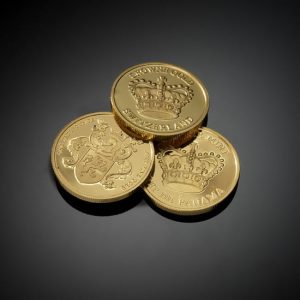
Gold coins are a fascinating investment
Checking gold coin authenticity
How will you know that the gold coins, you have just invested in are authentic? You will need the services of a gold expert who can certify the authenticity of the coins. But, there are certain checks you can do at home that can help you decide whether the coins are genuine or not. Gold, like other precious metals, has a high density. Therefore, the size of the coin would depend on its weight.
If the gold content of the coin has been tampered with and a certain percentage of base metals introduced into the coin, it will be lighter than it should be. Therefore, you can measure the diameter, thickness, and weight of the coin. To do this test at home, you will require a set of Vernier callipers and a weighing scale used by jewellers. You can also use a magnet to detect the purity of gold in the coin. Since gold is non-magnetic, a pure gold coin will not be attracted by a magnet. There is also a device called the Fisch Tester that allows you to test popular gold coins like the Krugerrand or the Gold Britannia.

Gold weighing scales are often used by jewellers
Apps to test your gold coins
Yes, in 2021, there is an app to test gold coins as well. These apps emit a sound and generate a ‘ping test’ by measuring the echo your coin produces. One of these apps is called Coin Trust and there is a drop-down menu that allows you to select the particular coin you’re testing and proceed from there.
Buy your gold coins from a reputed coin dealer
If you know which coins to buy, then simply purchase them online from a trustworthy broker. If you need guidance as to which gold investment coins to buy, then any good dealer will be able to advise you. Generally, stick to bullion finish coins, rather than proof finish, and only buy really well-known coins. In the UK, Sovereigns and Britannias are best as they’re also tax-free.
The simplest way to buy authentic and genuine gold coins, without going through the hassle of testing them at home is to buy your gold from a reputed UK dealer. Most reputed dealers will provide you with a certificate of authenticity, which is stamped by a coin certification agency like the PCGS or NGC. Storing the gold coin is important and you should never remove the coin from its original packaging so that there are no doubts regarding genuineness when you want to sell the coin.
Call Physical Gold to find out more about buying gold coins
Physical Gold is one of the U.K.’s most reputed gold dealers and has a team at your service that can guide you on how to buy gold coins and advise you on the authenticity of the coins you own. Please reach out to us on (020) 7060 9992, or simply send us an email and our team will connect with you to help you purchase the right gold coins.
Image credits: Mark Herpel and Pxhere
The gold Sovereign is the pride and joy of British coinage and has been around for a very long time. The modern gold Sovereign was launched in 1817, however, the Sovereign has a history that dates back even longer. The 1817 coin was part of the great British Re-coinage of 1816. The original 1817 gold Sovereign was designed by the Italian designer, Benedetto Pistrucci, who created the classic image of St George slaying the dragon. This is the image that appears on the gold Sovereign. At the time, the brother of the Duke of Wellington, William Wesley Pole commissioned the Italian designer to create the new coin for the re-coinage. Thereafter, the Sovereign was created to replace an older British coin called Guinea.
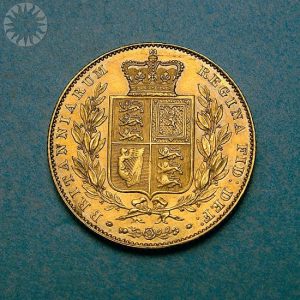
A fine example of an 1838 Gold Sovereign
The early history of the Gold Sovereign
The gold Sovereign is based on an even older British coin called the English Sovereign. This was issued in 1489 by King Henry VII. The English Sovereign weighed of 15.55 g in gold. It was the first coin with a value of 1 pound, and its size and fineness of gold changed over the years. In 1603, when King James I acceded to the throne of England, a Sovereign was released to commemorate the occasion. After that, the Sovereign was withdrawn from circulation and did not resurface until 1817.
How much gold did the 1817 Sovereign contain?
Under the proclamation of King George IV in 1817, the weight of the gold Sovereign was set at 5 pennyweights, three grains, Troy weight of standard gold. When we calculate this amount in grams, it becomes clear that the 1817 gold Sovereign contained approximately 7.942 g of gold. According to the proclamation, the 1817 gold Sovereign would also be known as the 20 shilling coin. It was this occasion that heralded the birth of the modern Sovereign, as we know it.
The changing Sovereign
Over the years, the design of the Sovereign was modified with the reign of each British monarch. For example, the Sovereign of King George IV features a laureate head of the King. Once again, when King William IV took over the throne in 1830, a new makeover of the sovereign was created.
By the reign of Queen Victoria, the Sovereigns size and weight were standardized, containing 7.98 g of gold, with a purity of 91.7%. The coin, popularly known as the Young Head, had a diameter of 22.05 mm and a thickness of 1.56 mm. However, the gold content of the Sovereign was eventually brought down to 7.32 grams of gold. This weight continued through the reigns of King Edward VII, George V, right up to the 2022 gold Sovereign of Queen Elizabeth II. Currently, the half Sovereign of Queen Elizabeth II contains 3.66 g of gold.
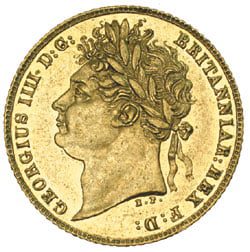
The obverse of the Sovereign of King George IV with a laureate head
Both coins are tax-free when bought and sold in the UK. A full Sovereign contains 7.32g of gold, with the smaller coin containing exactly half that amount. Half Sovereigns tend to cost more per gram to buy but provide more divisibility to a coin portfolio. A mix of both types of Sovereign is preferable for a balanced collection.
A bullion coin
Both the full Sovereign and the half Sovereign are now released by the Royal Mint as a bullion coin. Since 1932, the Sovereign has been withdrawn from circulation. However, it continues to enjoy its status as a legal tender coin. In the UK. However, its gold value makes it unfit for use in the economy as a payment method.
Talk to the gold experts to know more about the British Sovereign
Physical Gold is proud to be one of the largest and most reputed gold dealers in the UK. If you wish to invest in gold Sovereigns, please speak to our investment team, who can guide you on getting the best deals for this coin. Call us on (020) 7060 9992 or drop us an email via our website.
Image credits: Public.Resource.Org and Wikimedia Commons
There are many gold coins in the market and an investor needs to decide which ones to add to his portfolio. Undoubtedly, two of the best British coins that are attractive to investors are the Gold Britannia and the Gold Sovereign. In this article, we will explore the merits and demerits of both these coins and assess them based on key attributes and fundamentals required for building a strong portfolio.
Variety is the spice of life
A key consideration when choosing any gold coin for your portfolio is variety. As an investor, you need to have a good distribution of popular gold coins in different sizes and dimensions. There can also be variations based on the year of issue. The Gold Sovereign is an excellent choice when it comes to variety. The coin has been around for more than two centuries and several issues over the years are available from the reigns of different British Kings and Queens. In terms of size, there is also a wide choice that’s available.
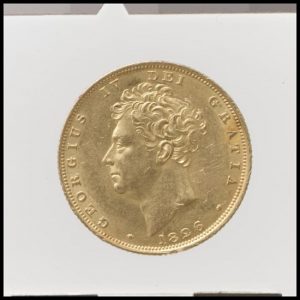
A Sovereign from the reign of King George IV
The Sovereign comes in different denominations such as the half, double and quintuple Sovereigns. Within the reign of just one British monarch – Queen Victoria, there are three available variations of the Sovereign. These are well-known as the Young Head, the Jubilee Head and the Old Head. When one takes into consideration all the attributes of the Gold Sovereign, it can be called an excellent choice that adds divisibility, variety and balance to your investment portfolio. When we compare the Britannia to the Sovereign, it’s worth noting that the Britannia only carries the portrait of our current Queen, Elizabeth II. On the other hand, the modern Sovereign carries the images of eight British monarchs.
Value for money
Gold Sovereigns are around one quarter the size of Britannias (1oz), making them slightly more expensive per gram due to the higher relative production cost. However, their smaller size provides more flexibility for gold investors. A mix of both is preferable in a portfolio, especially as both coins are tax-free in the UK due to their legal tender status.
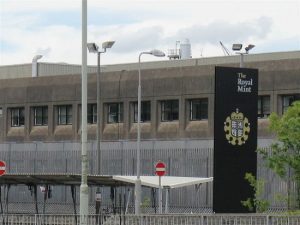
The Gold Britannia is the flagship coin of the Royal Mint
Some Sovereigns may carry premiums based on their rarity and historical value, however, Sovereigns that were minted as a bullion coin are easily available at low premiums. By this comparison, the Gold Britannia is also a bullion coin that has been around since 1987. Since it is a recent coin, Gold Britannias do not carry any historical premiums. The coin is easily available from most gold dealers with greater discounts on larger volume purchases. However, the Britannia is four times larger than the Sovereign in size, making it a more expensive coin.
Download the 7 Crucial Considerations before you buy Gold HERE
Divisibility provides balance to your portfolio
The Sovereign provides a greater variety and choice when compared to the Gold Britannia. Due to its smaller sizes, the Sovereign provides investors with the freedom and flexibility to sell the coin at various price points in the market by trading in different sizes and denominations.
Liquidity is an important consideration
In terms of liquidity, both coins are evenly poised, since they enjoy a strong secondary market. For investors, liquidity is a very important factor as investing in obscure coins defeats the objective of investment. The coin should be saleable at any given point in time for an investor to redeem its value. The Gold Britannia and the Sovereign are both excellent coins in this respect.
Which is the right coin for you?
The gold experts at Physical Gold can answer this question, based on the fundamentals and objectives of your investment. They can offer you free advice on whether you should buy, the Gold Britannia or the Gold Sovereign. Two find out more, call us on (020) 7060 9992 or drop us an email and a member of our team will be happy to get in touch with you.
Image credits: picryl.com, Wikimedia Commons
Gold Sovereign coins are one of the most popular British coins that attract investors every year. The Sovereign has been around for more than two centuries and benefits from abundant availability and low prices. The modern Sovereigns are available as bullion coins and carry low premiums due to mass production and lower manufacturing costs. The gold Sovereign is also a very affordable coin, since it is available in smaller sizes, as a quarter of an ounce. The gold Britannia, on the other hand, is a 1-ounce coin that is far more expensive than the Sovereign.
Great value for money
Due to their affordability factor, the gold Sovereign allows beginner investors access to the gold market by investing a smaller sum of money. Investors can also enjoy the flexibility of owning gold Sovereigns. Due to their smaller sizes, they add divisibility to an investor’s portfolio. From a tax perspective, Sovereigns are a great investment. Investors do not pay any VAT when buying the coins. Since the Sovereign is considered to be legal tender, investors can also avoid paying Capital Gains Tax (CGT) on the profits made from the sale of these coins.
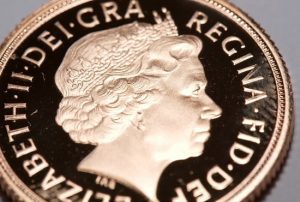
A gold proof Sovereign featuring the portrait of our Queen, Elizabeth II
Buying gold Sovereigns
The growing interest amongst investors in buying gold Sovereigns, leads many people to ask the question – what is the best route to buy Gold Sovereigns? Of course, many would turn to high-street jewellers and gold shops. This is an old route, mainly for people who like to see and touch the gold they’re buying. However, over the last 10 years, much of the gold trade has moved online. Today, if you’re buying investment-grade coins like the gold Sovereign, it’s best to buy from a reputed online dealer.
It’s safest to buy gold Sovereigns directly from a reputable precious metals dealer. If the dealership has the right credentials, it will ensure the Sovereigns are authentic, in great condition and sell at a competitive price. Many now have e-commerce stores, making it easy to buy online. Buying from a jeweller, an auction or privately are other options, but they pose significant risks.
Reputed online gold sovereign dealers
Moreover, large online dealers are more likely to stock a diverse range of gold products. By visiting the dealer’s website, you will probably see a variety and volumes of investable gold coins like the Sovereign. High-street dealers usually do not have such a large inventory. Due to their buying power, reputed online dealers are also able to offer rock bottom prices, especially on larger volume purchases. Many dealers, like Physical Gold, also have a monthly purchase scheme, through which you can regularly invest in gold Sovereigns and build up a formidable gold portfolio.
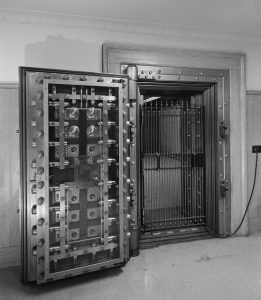
A reputed dealer can store your gold in an LBMA approved vault
Safety and security
Online gold dealers will also ensure that your transaction is conducted with utmost safety. Online payments are made using a debit or credit card, through a secure, encrypted payment gateway. Physical Gold, a reputed UK dealer uses a 3D secure payment method. Your gold Sovereigns are dispatched via a secure courier, and your package is fully insured. Many large dealers may also offer you the option of storing your gold securely with them in an LBMA approved vault. Lastly, all reputed dealers will provide an authenticity certificate and a buyback scheme. It is unlikely that you would get all this when you shop for your coins on the high street.
Download the Insiders Guide to buying Gold Sovereigns HERE
Get in touch with Physical Gold to find out more about buying gold Sovereigns
At Physical Gold, we pride ourselves on being one of the country’s most reputed online gold dealers. Our experts are always willing and ready to work out the best deal on gold Sovereigns for you. Call us today on (020) 7060 9992, or reach out to us online by visiting our website.
Image credits: Adam Greig, piqsels.com
If you want to collect a piece of history, along with unmatched value, look no further than the Gold Sovereign. While the Gold Britannia may be the flagship coin of the Royal Mint, the Gold Sovereign is perhaps the most iconic coin ever issued as a part of British coinage. The coin is heralded as one of the oldest British coins that have been around for more than 200 years.
The gold Sovereign
There is a distinction between the modern Gold Sovereign and the older coin that was issued during mediaeval times. The modern Sovereign has seen the face of several British monarchs. The coin was around during the reigns of the great Queen Victoria and Edward VII, followed by King George V, Emperor of the British Empire during the First Great War.
The Sovereign was continued during the reign of King George VI, who ruled the Empire during World War II and continued into the reign of his daughter, Queen Elizabeth II, our current British monarch. The older Sovereign was issued in 1489 during the reign of King Henry VII. However, the mintage of the Sovereign was terminated in 1604. The coin was reintroduced only in 1817.
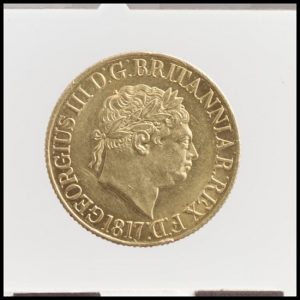
A rare George III half Sovereign from 1817
An illustrious history
It’s not just the history that makes this coin attractive. The Sovereign has a unique design. The reverse of the coin features an image of St George slaying a dragon. This iconic image was conceptualised by the famous Italian designer and engraver, Benedetto Pistrucci. The coin is indeed a work of art, as well as a representation of the fineness and elegance of British coinage.
Which Sovereigns should I buy?
The first consideration for any investor is affordability. Most investors want value for money. Old Sovereigns are small in size and therefore affordable. Having been produced for over 200 years, they’re very easy to sell on and can make a good investment if the gold price goes up. Their value generally increases with age and any profit made on their sale is completely tax-exempt in the UK. It’s also important to research the secondary market. Due to its long years of production, the gold Sovereign enjoys a vibrant secondary market. Many Sovereigns that have been issued over the years are available at different price points. So, it’s important to build a relationship with a reputed gold dealer and find out the best deals on Sovereigns that you can benefit from.
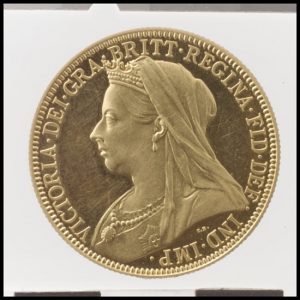
A proof Sovereign from the reign of Queen Victoria
Divisibility is an important differentiator
A definitive reason to invest in gold Sovereigns is the divisibility it brings to your portfolio. There is a wide variety of different sizes to choose from. As an investor, if you prefer larger coins with lower production costs, the full sovereign, the double Sovereign, and the quintuple Sovereign could be just right for you. The latter two are known as the 2-pound coin and the 5-pound coin, respectively. However, it may make sense to invest in smaller coins, which gives you the flexibility of selling small amounts of gold at the right price points. In that case, you have the option of acquiring the half and quarter sovereign. Incidentally, the quintuple Sovereign is perhaps one of the most famous, as it has the largest gold content ever found in a British coin.
Accessibility to the gold market
Another important reason to buy gold Sovereigns is that it is an affordable coin when compared to the gold Britannia. Investors can therefore own a sovereign, with a lesser amount of capital outlay and enjoy its benefits, including VAT and CGT exemptions.
Get in touch with Physical Gold for the best deals in gold Sovereigns
Our numismatic experts at Physical Gold can advise you on how to avail of the best deals when buying gold Sovereigns. Call us on (020) 7060 9992 or visit our website and get in touch with us online.
Image credits: Wikimedia Commons and Picryl
The gold Britannia is an iconic British coin that enjoys popularity and liquidity all over the world. The flagship coin has become the backbone of any gold investment portfolio. It is interesting to note that, unlike the gold sovereign, the Britannia has only been around since 1987. So, the coin is available at relatively low premiums and does not command a historical or rarity value. Due to continuous mintage by the Royal Mint, the coin is easily available in abundance.
Why is the gold Britannia an attractive investment?
For gold investors, these coins offer amazing value due to mass production and large sizes. Additionally, the gold Britannia is completely tax-free in the UK due to its status as legal tender. Investors do not have to pay VAT or CGT (Capital Gains Tax) on these coins. This means that any profits that an investor may make through the sale of gold Britannia coins are tax-free up to a limit of £12,000 in a single tax year. Undoubtedly, the tax efficiency factor hugely enhances its appeal for investors.
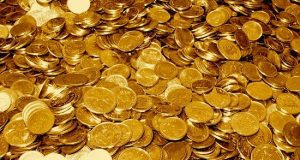
Gold bullion coins do not carry hefty premiums
Where can one buy cheap gold Britannia coins?
Usually, the latest year of issue Britannia is the cheapest for the simple reason that they are the most plentiful. It is important to note that investors should look for bullion coins to be able to buy at the best rate. According to the Royal Mint, the Gold Britannia bullion coin is manufactured each year with an unlimited mintage. However, this does not imply that infinite numbers of the coin will become available every year.
The actual production numbers are largely dependent on market demand. These numbers are also dependent on the amount of gold that the Royal Mint can source every year to meet the required demand and produce the gold Britannia coins. The coins are struck at the Royal Mint’s facility in Llantrisant where blank, faceless 1-ounce gold coins are received by the state of the art coin pressing machinery and printed with the obverse and reverse of the Britannia coins. Of these, the basic, mass-produced bullion version is cheaper than any special edition varieties or proof productions.
What are the other avenues of buying the cheapest gold Britannia coins?
Generally, older Britannias cost more due to scarcity and collectability, but occasionally it may be possible to find even cheaper pre-owned coins if someone has sold a large quantity at one time. In fact, one of the guiding principles in buying gold coins is to generally avoid older coins that carry hefty premiums and totally avoid obscure gold coins.
Low mintage in specific years can also be a problem, raising the price of the coin due to scarcity. For example, in 1998, the Royal Mint released only 750 gold Britannia bullion coins. Similarly, in 2002, only 945 coins of the 1-ounce gold Britannia were released. These numbers are much smaller when compared to 2010 when 14,727 gold Britannia bullion coins were minted.
So, buying the cheapest gold Britannia coins can mean looking out for the years of issue with easy availability and large mintage numbers. Of course, since 2013 the gold Britannia is also available in a greater number of size options like the half, quarter, one 10th and one 20th of an ounce. These are likely to be cheaper, due to the lesser amount of gold contained in the coin.
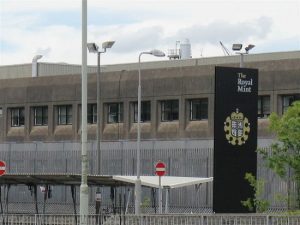
The Royal Mint manufacturing facility in Llantrisant
Call Physical Gold to find out about the best deals in gold coins
Physical Gold is a highly reputed, leading gold dealer in the country. We can offer the best advice when it comes to purchasing gold Britannia coins at the cheapest prices. Call us today on (020) 7060 9992 or get in touch with us via email.
Image credits: Jeremy Schultz and Wikimedia Commons
Coins become increasingly attractive to collectors and investors as their rarity increases. Bullion coins may be easily available in abundance at low premiums, making them attractive for investors. However, coins with a history are always more attractive to collectors and numismatists. The gold Sovereign coins, which have been around for centuries are a classic example.
The Sovereigns are available with the portraits of several British monarchs during whose reigns, these coins were issued. Queen Victoria alone has three different portraits on these Sovereigns. As a coin collector, it is exciting to delve into the history of these coins. But, let us look at a more recent event that has significantly impacted how coins were struck. Decimalisation has created two distinct category of coins – pre-decimal coins and post decimal.
When was decimalisation
Throughout the history of British coinage, a separate system was in existence for centuries. This was a system that divided the coinage of the nation into pounds, shillings and pence. This system divided the denomination of British currency and everyone knew that 12p was equivalent to a shilling. A shilling was one 20th of a pound, so 20 shillings added up to a pound. However, this was a complex system and needed to be simplified. It’s not that past governments did not realise that there was a need for a simpler system. However, it hadn’t been put in place.
In 1848, there was an attempt to introduce a decimal coin. This coin was called the Florin. Its value was 1/10 of a pound. But, the values of other coins remained the same. The decimalisation system had been suggested during the 19th century by Sir John Bowring, who was a Member of Parliament. It was due to his suggestions that the Florin had been introduced.
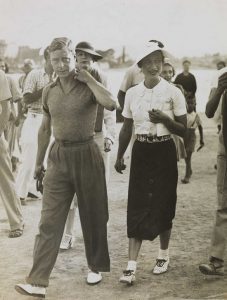
King Edward VIII abdicated to marry Mrs Simpson. Coins created for his reign are rare
The decimalisation idea would divide British currency into pre-decimal coins, which would be withdrawn from circulation. A special task force was created in 1961 to debate and decide on the introduction of a decimalisation system for the British currency. The question on everyone’s minds was, “When was decimalisation going to kick in?” “When was decimalisation money, or post decimal coins going to be available?”
Eventually, the decision to withdraw the old system and pre-decimal coins were finally announced in March 1966. The D- Day or, Decimal Day was 15th February 1971. It was on this date that pre-decimal coins were finally withdrawn from British coinage. Decimal Day will celebrate its Golden Jubilee, or completion of 50 years on 15th February 2021. Today, with the passing of years, not everyone remembers the date and many people from the younger generation ask, “When was decimalisation?” As we celebrate its 50th year, it is certainly a date that changed the coinage of our country forever.
What pre-decimal coins should I collect?
Well, not all pre-decimal coins would command a high value. Firstly, only some of them are made of gold and silver. Others are made with copper. Although they have been withdrawn from circulation, they are freely and abundantly available. However, some of them have become rare over the years and can fetch a tidy sum. For example, the 1917 George V Sovereign from the London Mint could be worth around £ 15,000. Another pre-decimal coin that’s worth quite a bit is the 1937 Edward VIII brass threepence. Only 10 were produced and their release was withdrawn due to the abdication of the King.
One of these could be worth as much as £45,000. Amongst the pennies, the 1933 George V penny is highly valued, mainly due to its rarity. Only seven were issued at the time, and if you manage to get your hands on one, it could fetch you as much as £72,000. There is also a 1937 copper one penny coin that had been struck to be released during the reign of King Edward VIII. Only a few were produced and one of these fetched £111,000 at an auction in 2019. So, if you were to find one of these in your attic, you could make a hefty sum of money very quickly.

Decimalisation changed the way the Royal Mint struck their coins
Call us at Physical Gold to find out more about rare coins
Our coin experts at Physical Gold can help you identify rare coins and assist you in purchasing them for your collection. Call us on (020) 7060 9992 or drop us an email today by visiting our website.
Image credits: Picryl and Wikimedia Commons
Dieu et Mon Droit – How did the phrase originate?
The origin of the phrase goes back to the time of Richard I, who was descended from French ancestry. King Richard was the King of England from 1189 till his demise in 1199. King Richard used this phrase to announce that it is the divine right of the King, or Monarch to govern.
The phrase was later adopted by King Henry V, as the Royal motto for the Kingdom of England. The phrase now appears on the coat of arms used by the British monarchy. People often wonder how a French phrase could be adopted by the English Royal Family. However, mediaeval England was not the same place that we know now. Norman-French was the language of the English Royal Court at the time. The rulers and the upper classes also spoke this language during that period.
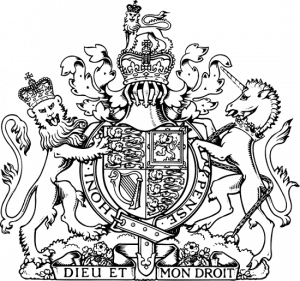
The Royal Coat of Arms
The meaning of the phrase on the coat of arms
When translated, the phrase simply means “God and my right”. Currently, it is the motto of the British Royal Family. A close inspection of the coat of arms used by the British Monarch, reveals that the inscription can be found on a small banner underneath the shield. In the present day, the coat of arms is used by our reigning monarch, Queen Elizabeth II. On the left of the shield, stands the guardian lion wearing the crown of St. Edward. On the right of the shield is a Scottish Unicom. Underneath the shield, there is greenery, with a thistle, Tudor rose and Shamrock. These are representative of the kingdoms of Scotland, England and Ireland. Right below this display is a banner containing the words “Dieu et Mon Droit”.
Where can this coat of arms be seen?
The coat of arms is the official symbol of the British Queen. Therefore, it is clearly visible in every UK court of law, except for the Supreme Court of the United Kingdom and the Magistrate’s Court in the City of London. It is also used on government documents and you might be able to view it on your passport. Globally, this coat of arms is visible on the entrances to UK embassies and consulates.
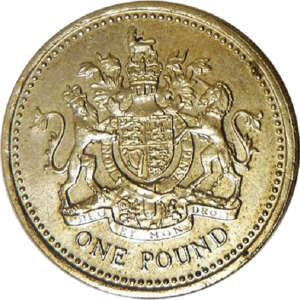
1983 one-pound coin
Appearance on coins
The royal coat of arms has been featured regularly on British coinage, manufactured by the Royal Mint. The most common example of this is the British one pound coin, which has been in circulation since 1983.
By 2008, the Royal Mint had minted a new series of coins with a denomination of 1 pound and below. The full Royal coat of arms appears on the one pound coin with the phrase Dieu et Mon Droit. However, only sections of the coat of arms can be seen on the coins of lower denomination. In 2016, the Royal Mint released a new bimetallic coin called the nations of the crown. Interestingly, an old British coin called the Guinea, which was minted between the years 1663 and 1814 also displayed the royal coat of arms, with the inscription. The coin took its name from the West African nation, Guinea. The gold that was used to mint this coin was sourced from here.
The numismatic experts at Physical Gold can address all your queries related to coins
Collecting coins can be an absorbing hobby, and if the coins are produced from precious metals, they can add tremendous value to your collection. Many collectors and investors have questions related to precious metal coins. Call our coin experts on (020) 7060 9992 or reach out to us via our website and we will be happy to advise you on all your coin purchases.
Image credits: Wikimedia Commons and Wikimedia Commons
Investing in gold and silver coins can be an absorbing passion, as well as a lucrative hobby that allows you to reap rich rewards when you make the right investments. However, when you purchase gold and silver coins, it is extremely important to carry out your transactions through a reputed dealer.
Problems you may face when you buy from a high-street dealer
Buying a precious metal coin is all about ascertaining its authenticity. If you are a layperson, or a hobbyist, the chances are that you may be easily taken for a ride by a pawnbroker or high-street gold dealer. There are several factors to consider. Firstly, you need to be sure about the authenticity of the coin. Next, you should also be able to identify the purity of the metal used to manufacture the coin.
To do this, you will require certain testing equipment. In the absence of proper identification and purity assessment of the coin, you run the risk of being cheated. Additionally, a high-street gold dealer would not have a vast inventory of coins to choose from. More importantly, when you leave the premises of the high-street dealer with your valuable purchases, there is a good chance that you can be targeted for robbery.
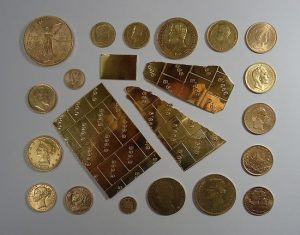
Fine gold and gold coins
Identifying a reputed dealer
If you search on Google for “coin dealers near me”, you will come up with a list of coin dealers based on the geographical area, you are located in. Cross-referencing the list with a reputed industry body like the BNTA can be a great start. The BNTA website publishes a list of affiliated, reputed coin dealers. The first thing you can do on shortlisting these dealers is to give them a call.
A reputed dealer will always answer all your questions openly. No information will be kept hidden from you. Also, you will find that most reputed dealers have a large online catalogue that you can browse through when making a purchase. Lastly, they would offer a buyback guarantee. Needless to say, if a dealer refuses to buy back the gold, they are selling to you, there must be something wrong.
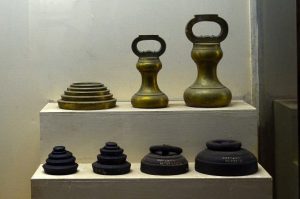
Gold measurement tools from yesteryear
Building a relationship
In order to acquire the best deals on coins, you need to build a steady relationship with the dealer. You need to discuss your buying preferences, specific coins that you are looking for, and a ballpark price that you are willing to pay for them. This will give the coin dealer a good idea of what you’re looking for. So, when an opportunity to purchase a good coin comes up, you’ll be the first to know. It is a mistake to think that the term “coin dealers near me”, simply means that you are limited to small pawnshops, antique vendors, and the like
A reputed online merchant would be able to fulfil your requirements since most of them have a countrywide distribution facility. You would be required to insure your purchases and pay for any shipping logistics. However, this ultimately ensures your safety, and the goods will be securely delivered to your residence.
How a reputed dealer can add additional value
Investing in precious metal coins is also about maintaining divisibility, liquidity, and tax efficiency within your portfolio. Gold coins are free from VAT in the UK and may also be exempt from capital gains tax. A good dealer will be able to advise you on how to create variety in your portfolio while ensuring that liquidity and divisibility are maintained.
Discuss your coin purchases with Physical Gold
At Physical Gold, we take pride in being one of the nation’s most reputed online dealers. Our advisors are always at hand to assist you in your coin purchases. Call us today on (020) 7060 9992 or contact us online via our website.
Image credits: Wikimedia Commons and Wikimedia Commons
British coinage is considered to have one of the richest histories, compared to any nation globally. Our long tradition of Kings and Queens has resulted in one of the world’s oldest coinage systems that have witnessed the reigns of several monarchs over centuries. When we study European coinage, Britain’s history is distinctive and different from the coinage of other European kingdoms and monarchies.
During the 19th century, there were approximately 20 ruling monarchies across Europe. Of course, the currency coins released by many of these monarchs featured a stylised image of the ruler and motif or a coat of arms on the other side of the coin. Now, British coins have had certain peculiarities in the past. These usually consisted of a slogan or a line embossed on the coin. However, who would’ve thought that the German words ‘ich dien’ could appear on a British coin?
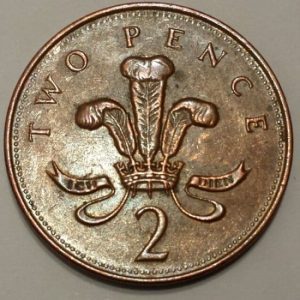
Two pence coin bearing the inscription – ‘ich dien’
What does ‘ich dien’ mean?
Well, the words ‘ich dien’ in the German language literally means ‘I serve’. These words appear on the coat of arms of the Prince of Wales. The words appeared as early as the 14th century, leading to several speculations regarding the origins of the phrase. Interestingly, these words have also been used by Edward the Black Prince. The phrase may have been adopted following an alliance or a meeting with a German monarch, but history has no record of any such event. Therefore, we may never know the exact reason why the phrase ‘ich dien’ was adopted.
The feathers of the Prince of Wales
It is customary for many royal houses to have an insignia or a coat of arms. This creates an identity that can be instantly recognised, much like a logo on a product. The Prince of Wales uses a heraldic badge as the royal emblem. The words ‘ich dien’ is imprinted on the bottom of this badge. However, the phrase was not used only on the emblem. The words ‘ich dien’ can be found imprinted on certain British coins over the years.
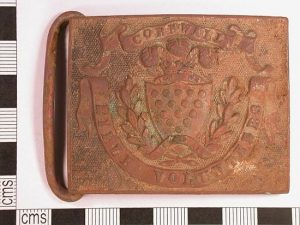
1870 belt plate from Cornwall with the inscription – ‘ich dien’
British coins that carry the words ‘ich dien’
The most commonly found ‘ich dien’ coin is the two pence coin. The words appear on the reverse of the coins of this denomination that were issued between the years 1971 and 2008. Of course, this was not so long ago, and so many such coins can be found in circulation even today. You may have one in your pocket right now!
2008 proof coin celebrating the birthday of Prince Charles
In 2008, his Majesty the Prince of Wales celebrated his 60th birthday. To commemorate this important occasion, a proof coin was minted and released by the Royal Mint. This coin has the words ‘ich dien’ embossed directly on the face of the coin, underneath a stylised image of Prince Charles. This proof coin is of interest to numismatists due to its uniqueness.
Other British coins containing the phrase ‘ich dien’
While the above are examples of recent British coins that contain the German phrase, many other notable coins do so too. The 1811 one penny “Bristol and South Wales” Coin also carries the Prince of Wales’s feathers and the inscription ‘ich dien’. Similarly, there is a British India medal, although officially not a coin in circulation, it carries the words, ‘ich dien’. This medal commemorates the royal visit of King George the fifth to India.
Talk to the coin experts at Physical Gold
Our coin experts are extremely knowledgeable about collectable coins as well as bullion coins. Whether you’re an investor or a collector, you can benefit by giving us a call on (020) 7060 9992. You can also send us an email and we will get in touch with you at the earliest.
Image credits: Wikimedia Commons and Wikimedia Commons

